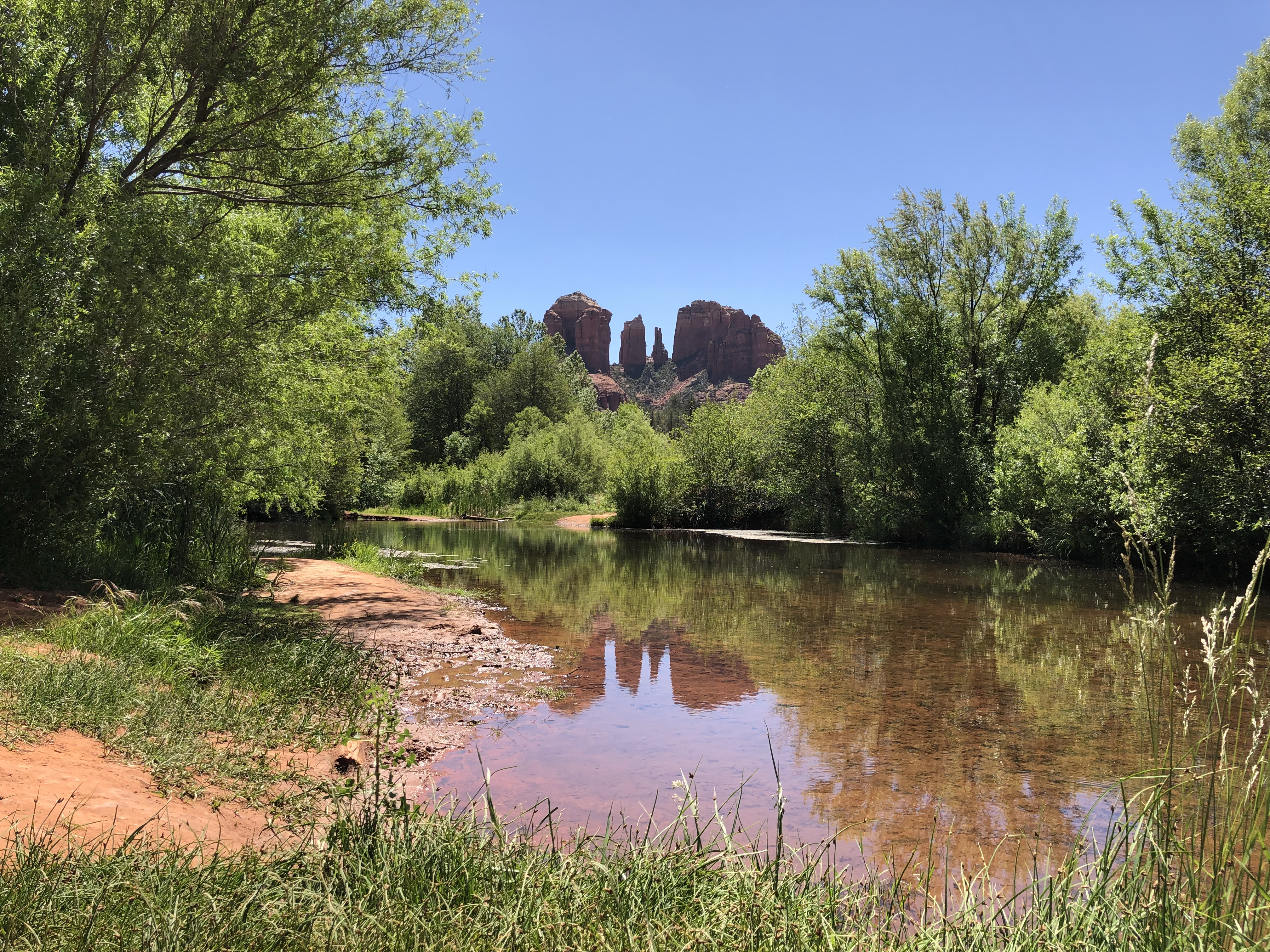I have written in previous posts about the fond memories I have of my maternal grandmother, who lived with us and was instrumental in raising my sister and me while both of our parents worked outside the home. She was a faithful Southern Baptist with hardcore Biblical beliefs that could tame the hounds of hell, not to mention her only grandson out of five grandchildren. At the same time, she had an almost raunchy sense of humor. Flatulence could easily be summoned at just the right moment to break the wind of monotony.
My grandmother had a sister who lived in our town in middle Georgia. They adored each other and shared many lovable and peculiar characteristics. My grandmother didn’t drive, but her sister did. They were ever mobile, always ready for trips to the grocery store, the mall, church events, the farmer’s market, or the countryside to see relatives who had remained outside the city limits where the family’s roots were firmly planted. They both carried oversized, patent leather purses (think an inexpensive version of the Queen Mother’s favorite accessory) that could carry a week’s provisions while also functioning as a weapon that would give even a Central Park mugger pause. Middle Georgia can be miserably hot and humid in the summer, almost necessitating short pants; however, these were two ladies who clearly had not abandoned the practice of wearing hosiery to cover bare legs. They compromised by pairing their shorts with low-heal pumps and knee-high hose – ever fashion-conscious.
The matriarchal sisters were proud masters of the kitchen and faced the challenge of every major meal with the skill and determination of a battlefield commander. It started with the shopping. They didn’t have to give too much thought about what to put in the grocery cart – that would be referred to as a “buggy” in the native tongue of Georgia – because there wasn’t a lot of money to spend, and we generally rotated through a menu of about 5-6 major courses. They procured the staples from the only grocery store in town worthy of their discriminating patronage: Piggly Wiggly. They supplemented the store’s imported produce with indigenous fruits and vegetables from the town’s sizeable farmer’s market, where shoppers could find all the home-grown favorites such as corn, peas, beans, tomatoes, collards, turnips, and of course, sweet onions that are still the pride and economic bedrock of a south Georgia village called Vidalia.
Like all good commanding officers, the sisters would gather the troops, or in this case family members, to assist in the initial steps of the culinary campaign: shucking corn, snapping beans, hulling peas and butter beans, etc. At our house, my mother and sister were quite adept at these essential tasks. I am several years younger than my sister, and although I occasionally attempted to work on the peas and beans, if for no other reason than to be included, I was extremely slow and lost interest quickly. My grandmother took care of the most complicated and dangerous preparatory chores, such as wielding a sharp butcher knife to split the ears of corn on the cob, shear off the kernels, and magically mix them with ingredients to create the best creamed corn I have ever tasted. By the time she finished, her glasses and a good portion of her face and gray hair were speckled with little pasty globs of mutilated corn. She took no prisoners.
Many young boys approaching adolescence from my generation spent considerable time outdoors riding their bikes, playing in the yard, and finding ways to burn off energy. I was a skinny, short kid with long fingers and toes, shaded by the “shadow of forgotten ancestors” with all due credit to the late Carl Sagan. Summoning my recessive hominid genes, I was comfortable climbing small trees. It was fun. In our back yard, we had a small grove of plum and pear trees, and the ripened fruits of summer provided another incentive to defy gravity among the limbs and leaves.
With their keen awareness of all available resources and opportunities, my grandmother and great aunt wasted no time putting my arboreal dexterity to practical use. They both loved peaches. My great aunt had the telltale yellow-orange peach stain permanently emblazoned on the front of practically every blouse she owned. My father was unsuccessful in cultivating this fruit tree in our yard. The grocery store, roadside stands, and the farmer’s market had plenty of peaches available, but the freshest and sweetest ones were still attached to trees and ripened to perfection in several large orchards just a few miles away in the surrounding counties. When I was coming along, Georgia truly lived up to its nickname as the Peach State. Visitors to the peach farms could get the greatest value and the best fruit by picking their own.
Always on the lookout for a bargain, the savvy sisters drafted me to “help” them pick a bushel of peaches at one of the farms. We lit out for the territory in my great aunt’s Chrysler sedan. All the windows were rolled down to welcome in the thick, steamy air typical of a summer in Georgia. Wearing stringy cutoff jeans, my legs stuck to the vinyl back seat like chewing gum on hot pavement. We arrived at the farm wasting no time, marching toward the orchard with the singular mission of finding the most delectable peaches in the southeast. When the ladies identified just the right tree, its branches encumbered with fruit almost to the breaking point, they dropped their peck baskets to the ground and turned their sweet, smiling faces toward me.
“Son, if we point to the ones we want, can you get up in there alright and pick them?” My great aunt almost always called me “son.” Peach trees in a mature orchard are typically 8-12 feet tall, but they are trimmed and trained to have four or five major branches off the trunk a few feet from the ground. These branches project outward and upward from the trunk and support the many smaller branches that bear the fruit each season. So, you can climb into the cradle of the large feeder branches without too much difficulty, but then you must reach from that position to pick the fruit, which can get a bit precarious. Even a scrawny kid weighing 90 pounds soaked in summer sweat could easily snap a tree branch laboring under several pounds of peaches. Doing so would not only cause damage to the tree and ruin a peck of peaches, but it would likely send the tree climber crashing to the ground with scratches and bruises or a punctured eye.
“Sure,” I said with foolish enthusiasm induced by my pre-teen confidence. I vaguely remember taking my shoes off to improve my footing. Again, I embraced my primate taxonomy. I weaseled my way between the feeder branches, and carefully stepped up into the tree’s cradle. The analogy of “low hanging fruit” was not in my lexicon in the early 1970s, but even if it had been, the sisters would have promptly dismissed any suggestion of the kind. They had already set their sights on loftier specimens. After surveying the entire canopy, they began pointing at succulent globes just beyond my reach. Through unnatural contortions and absurd acrobatics that had been unnecessary for any of my previous adventures, I was reasonably successful in satisfying their quest for a bountiful bushel of goodness while managing to escape serious injury or banishment from the property.
My grandmother must have been pleased enough with my aerial harvesting abilities. More than once she sent me scampering up our trees at home to procure what she judged to be the best pears for making preserves that our family and relatives savored throughout the year. If the nuclear holocaust we all feared during those years had materialized, I would be forever grateful to my grandmother and her sister for preparing me to survive in the new stone age as a hunter-gatherer. They loved me more than I could have imagined. They were the sweetest Georgia peaches of all.


















